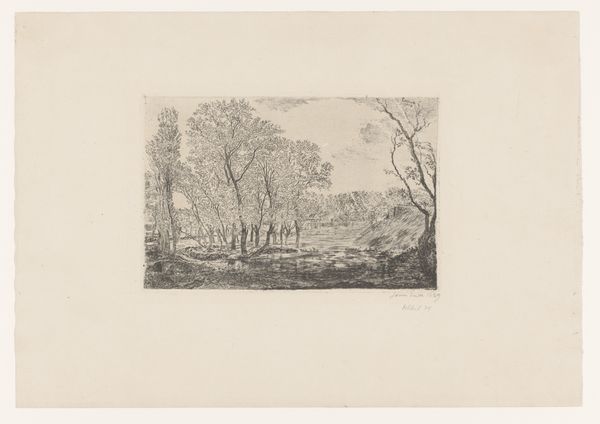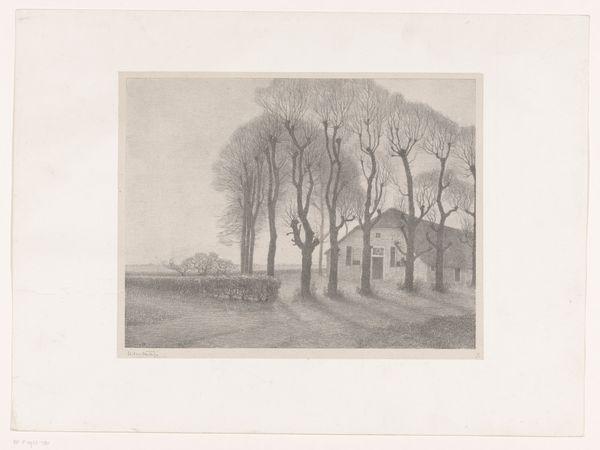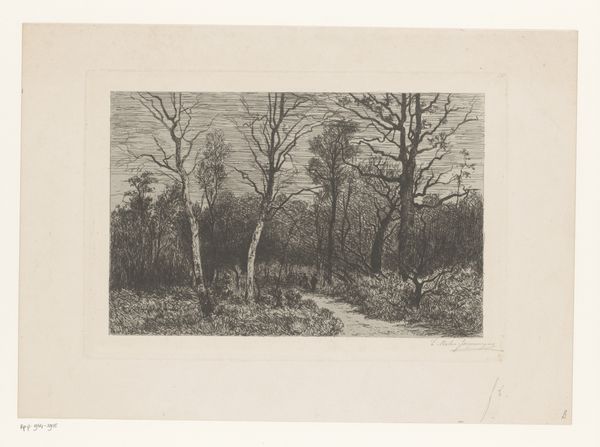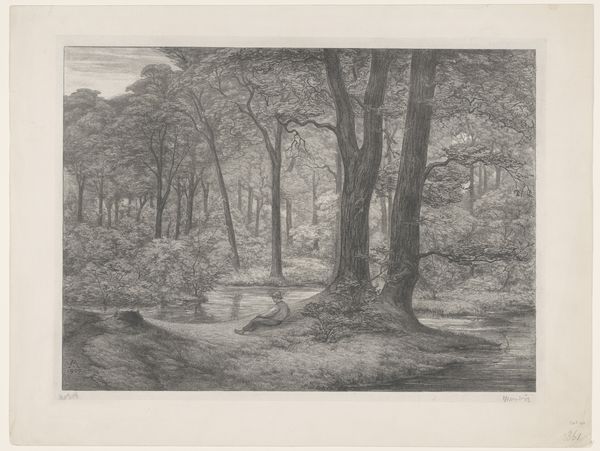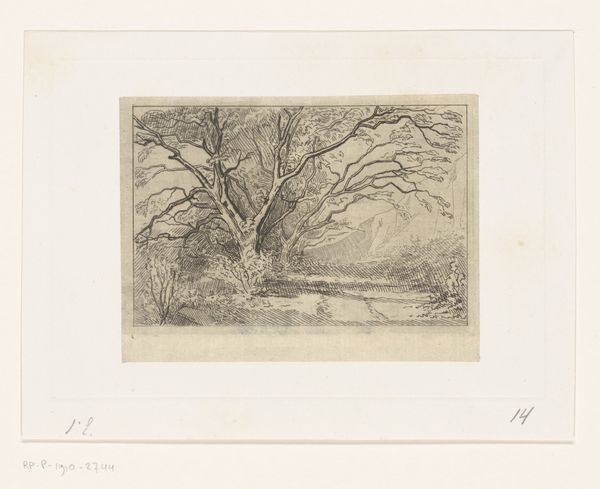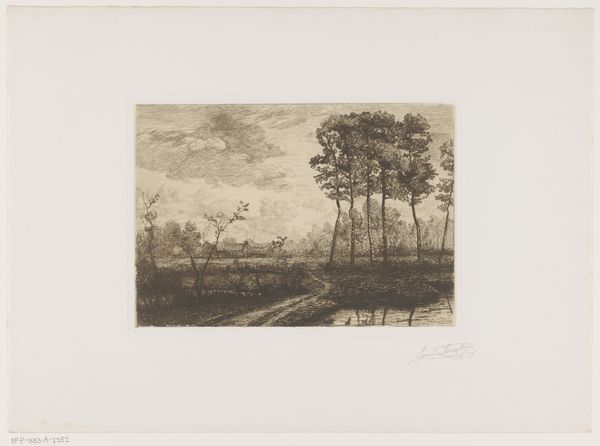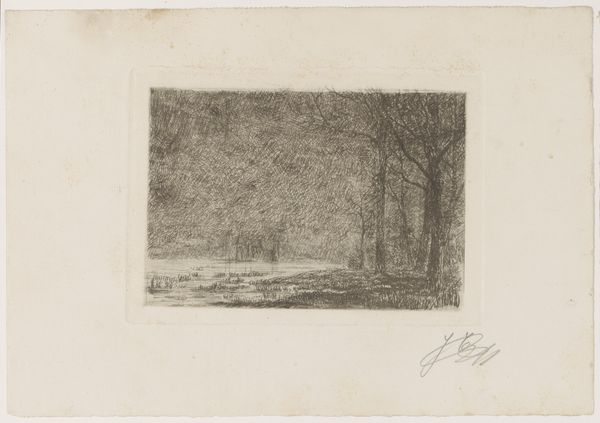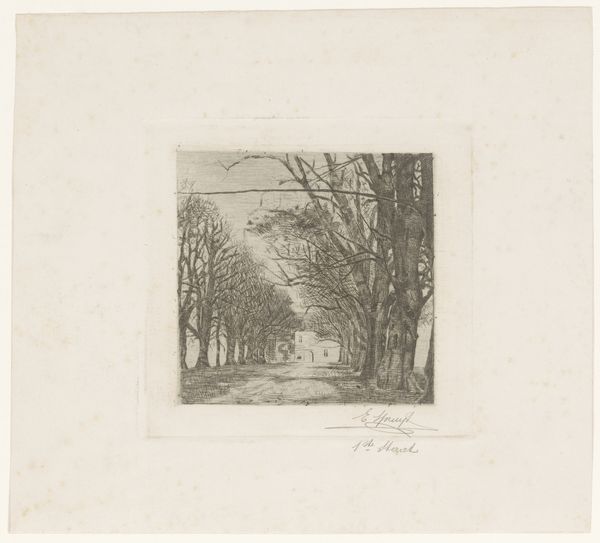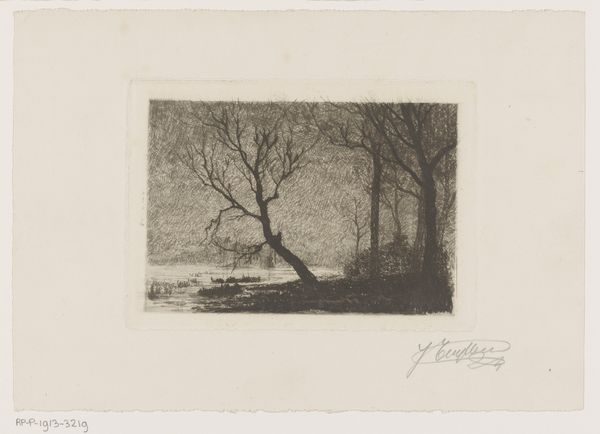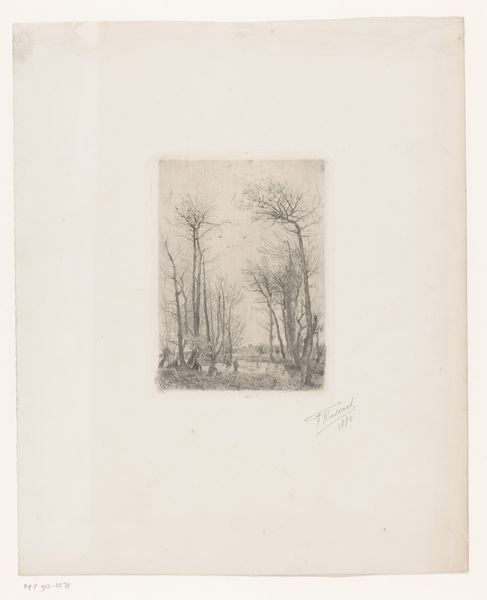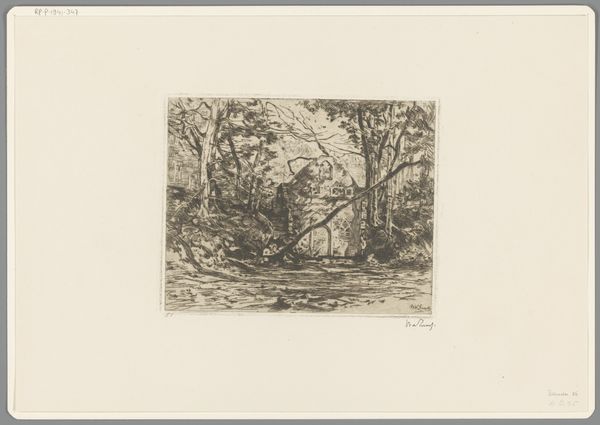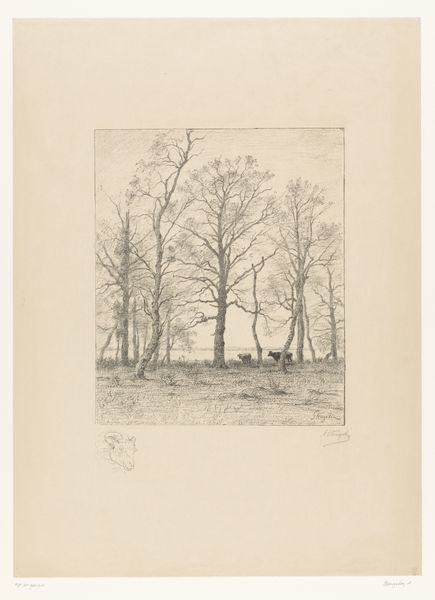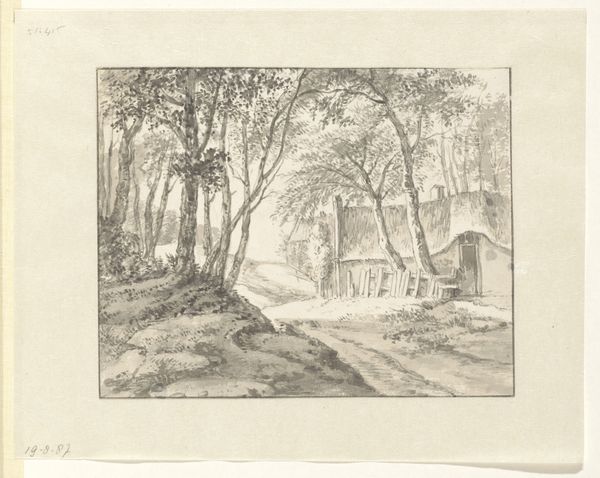
print, etching, paper
# print
#
etching
#
landscape
#
etching
#
paper
#
forest
Dimensions: height 171 mm, width 261 mm
Copyright: Rijks Museum: Open Domain
Curator: Welcome to this detailed print, "Soir d'Automne," possibly created around 1883 by Jérôme Tuyttens, using etching on paper. Editor: Immediately, I’m struck by the starkness. It's melancholic, but the composition has this intriguing sense of depth. It feels more vast than the medium might suggest. Curator: Indeed. Etching, as a process, allows for that incredible detail, which in turn impacts the viewer's perception of scale. The labor is really quite evident when you examine it closely, notice the thousands of tiny, deliberate lines… it suggests the artist’s engagement with craft. Editor: And those bare trees! Trees have always represented the cycle of life and death, of course, and autumn is symbolic of decline, drawing inward, towards death and introspection. You can feel the weight of the year in this forest scene. Curator: I see what you mean. And consider that printmaking like this meant wider distribution. Were these images consumed and shared widely? And how does the relatively small scale factor into it's reception - a world experienced through mediated means. Editor: That distribution speaks to the democratization of art. Maybe even as tokens for people disconnected from the physical landscape. I notice the path. Pathways often appear in art as allegories of journeys or moral choices. But in this bleakness, there's something ominous. Curator: So, the paper itself, then. It becomes an active ingredient - the specific type would have been readily available, of course. We might trace paper manufacture, consumption… Editor: And perhaps that very accessibility created a space for an artist like Tuyttens to insert symbolic narratives into the popular imagination. It's subtle but ever-present in art history - to touch people with something relatable and personal, like a memory, a seasonal mood, maybe even grief or letting go. Curator: Absolutely. The print almost encourages tactility, as if you might follow the texture, tracing its grooves. This creates a type of ownership too. The art object comes home and perhaps enters everyday acts. Editor: Well, looking at this piece has given me pause, especially now, moving towards shorter days. The visual language feels enduring and it feels personally potent. Curator: It’s intriguing how a seemingly simple landscape etching can invite us to reflect on both art and manufacturing processes and these very human journeys, even today.
Comments
No comments
Be the first to comment and join the conversation on the ultimate creative platform.
